Part II of
Agenda 2030 is ‘Building Back Better’ in the Magic Valley
PART I detailed the background, history and scope of Agenda 2030.
PART II zeroes in on Agenda 2030’s Sustainable Development Goals (SDG).
PART III will focus on how Agenda 2030 SDGs are being implemented in Idaho and the Magic Valley and offers a practical action plan to resist ‘Build Back Better.’
The United Nations Agenda 2030 has various components of development known as the Sustainable Development Goals (SDGs) of which there are seventeen. Each of these focuses on a specific area of society, and has several goal targets. The total number of targets is 169. It builds on a previous UN report known as the Millenium Development Goals (MDGs) from 2000, which were to be implemented by 2015. The MDGs were built on Agenda 21 goals. The UN states how the SDGs differ from the MDGs:
The new Goals are universal and apply to all countries, whereas the MDGs were intended for action in developing countries only.
They are absolutely clear here. This is not just for poor parts of Africa. This is for everyone on the planet, including you.
It’s also interesting to note the evolution of the jargon. We all remember around the year 2000 how the word “millenium” seemingly popped up everywhere. It was the trendy branding to use at the time. But that eventually gave way to the next buzzword, “sustainable” and the favorite ongoing obsession of champagne Marxists: “inequality”. Nowadays, we’re awash in “diversity, equity and inclusion”, so of course we see inclusion popping up in the SDGs.
It’s also telling that they use the establishment approved term “climate emergency”. It’s the latest iteration in phraseology from global cooling, to global warming, to climate change, to the climate emergency. You’ve no doubt heard “the climate crisis” repeated ad nauseam since around the time Joe Biden took office.
We encourage you to read through all of the goals and targets here, with more detailed reading here. The language is focused on the technocratic aspects of nation building, with a sprinkling of the aforementioned social justice jargon. You’ll find it to be flowery and idealistic to the point of naivete.
Of course, this is nothing new. The UN has so many conferences across the world, that it appears they keep an entire industry of conference organizers and attendees employed. The “work” products of these meetings are more long-winded reports which read like op-eds full of laughably naive language. They read like a vision of how the world should be as imagined by a child.
One small example among many is this document which summarizes a meeting on global development finance held in Ethiopia in 2015. It’s littered with social justice language and the usual preambles of: We recognize, we affirm, we reaffirm, we call on, we note, we take note of, we urge, we commit, we recommit, we stress, we emphasize, we appreciate, we will redouble, we will strengthen, we will develop, we will foster, we will craft, we will consider, we will encourage, we will support, we will seek, we decide to establish, we look forward to, we should endeavor to, we further acknowledge, we further call, we welcome, we endorse, we resolve, we reiterate, and finally, we are concerned.
While many UN reports like the one noted above are mostly wish lists, Agenda 2030 is different. The agreement is not legally binding, however they do expect all governments to implement all of the goals. How much of it America implements remains to be seen. To be fair, many of the goals apply much more to developing nations. There shouldn’t be much to do for them because as a developed country, we crossed those bridges decades ago. However, that doesn’t mean there aren’t any targets in America for some of them.
To be sure, plenty of imaginative conspiracy theories about Agenda 2030 have been concocted. This USA Today article rebuts some of those claims. However, this doesn’t mean that the UN doesn’t expect this to permeate all aspects of governing and development across the globe.
A notable quote on the SDGs overview page is:
The UN Secretary-General called on all sectors of society to mobilize for a decade of action on three levels: global action to secure greater leadership, more resources and smarter solutions for the Sustainable Development Goals; local action embedding the needed transitions in the policies, budgets, institutions and regulatory frameworks of governments, cities and local authorities; and people action, including by youth, civil society, the media, the private sector, unions, academia and other stakeholders, to generate an unstoppable movement pushing for the required transformations.
Note the second part about local action. This is where we’re focusing in this article. They aren’t shy about stating their intent to infiltrate local governments at every level including their budgets and regulatory frameworks. The question for this article is: are they embedded in the Twin Falls city government, and if so, how deep does it go?
RELEVANT SDGs
As mentioned above, some SDGs have been implemented long ago in America because we developed decades before much of the rest of the world. Other SDGs, such as #14 Life Below Water, don’t apply to Idaho, because we are not on the coast. So we’ll focus on the SDGs which could have the potential to creep into the workings of Idaho and the Magic Valley, and omit consideration of the others.
#1 NO POVERTY
This SDG starts out with the following impossible goal: “End poverty in all its forms everywhere.” It follows up with this goal target:
1.A Ensure significant mobilization of resources from a variety of sources, including through enhanced development cooperation, in order to provide adequate and predictable means for developing countries, in particular least developed countries, to implement programmes and policies to end poverty in all its dimensions.
This dessert dovetails nicely off of a main course of full blown word salad seen in this excerpt from the preamble of the overall description of Agenda 2030:
Eradicating poverty in all its forms and dimensions is an indispensable requirement for sustainable development. To this end, there must be promotion of sustainable, inclusive and equitable economic growth, creating greater opportunities for all, reducing inequalities, raising basic standards of living, fostering equitable social development and inclusion, and promoting integrated and sustainable management of natural resources and ecosystems.
You’d be hard pressed to pack more buzzwords into two sentences. If the challenge of poverty could be solved with UN buzzwords, it would have been eradicated many years ago.
In all seriousness, this SDG is mostly about welfare programs for developing countries, as is evidenced by this goal target:
1.3 Implement nationally appropriate social protection systems and measures for all, including floors, and by 2030 achieve substantial coverage of the poor and the vulnerable
America has long had a variety of welfare programs which provide free housing, free food, free cash, free cell phones, discount landlines, free school lunch, free summertime lunch, free medical care for the elderly, free medical care for the poor, free medical care for illegal aliens, free park passes and free public transportation to name a few. The cradle-to-grave American welfare state will no doubt continue to expand without any guidance from the UN. Further, welfare programs are funded at the state and federal levels.
Thankfully, the Magic Valley hasn’t drifted far enough leftward yet to begin implementing its own welfare programs. When the time inevitably comes that they begin doing so, it’ll likely be without any direction from the UN.
One exception is the monies received over many years through the College of Southern Idaho Refugee Program, which is a welfare program in and of itself, in league with The UN Refugee Agency goals of inclusion, “…that no one will be left behind and that Goals and targets will be met for all nations and peoples and all segments of society.”
Click here to view how refugee centers, like the CSI Refugee Center in Twin Falls, are rapidly changing America’s demographics. Click here to learn more about President Biden’s policy to increase refugee admissions. Click here to read, “Forgotten case: Girl, five, sexually assaulted by refugee boys” by CSI refugees in Twin Falls in 2016. And click here to read about the cover-up by officials that followed.
#4 QUALITY EDUCATION
This is another one of the goals which sound good to the casual observer. Who wouldn’t want their child to get a quality education? This SDG is more oriented toward developing countries which don’t have good educational opportunities. Most of the goal targets don’t apply to America or Twin Falls. However, there are some hidden gems in there to keep an eye out for.
4.7 By 2030, ensure that all learners acquire the knowledge and skills needed to promote sustainable development, including, among others, through education for sustainable development and sustainable lifestyles, human rights, gender equality, promotion of a culture of peace and non-violence, global citizenship and appreciation of cultural diversity and of culture’s contribution to sustainable development.
Here we see an obvious, blatant, anti-nationalist agenda being pushed. Any time the word “global citizen” is mentioned, be very afraid. This is the preposterous idea that people are not citizens of nations, but instead are citizens of the world. Your kids aren’t going to be one of those backward types who pledges allegiance to America. No, they will be enlightened, stunning, brave and woke. They’ll pledge allegiance to the globe.
Such a notion is absurd. If being a “global citizen” is a valid legal construct, then why do we need passports issued by one nation in order to travel to another nation? This type of teaching can be very harmful to students, because it paints a picture of a world that does not, and cannot exist.
This particular SDG would fall under the jurisdiction of school boards, rather than the city. As we know, globalist wokeism is already in Idaho schools without the help of the UN. Click here to learn how to detect and defeat critical race theory in Idaho classrooms. Marxist teachers unions and other agitators who write the curriculum are at the source of this. We don’t have any evidence that the UN or its proxies are currently behind this in Twin Falls, per se, but that could change in the future. In addition, Common Core is solidly in place at all levels of Twin Falls schools and the Idaho education system. This is part of the Agenda 21/2030/ UNESCO here.
#7 AFFORDABLE & CLEAN ENERGY
This is another SDG which is out of our hands since the city doesn’t have control over the energy mix which powers our lives. One of the target goals is:
7.2 By 2030, increase substantially the share of renewable energy in the global energy mix.
Despite not having any local control over this, it’s worth considering. We’ve seen the unsightly, unreliable, bird-busting, bat-bashing eco-crucifixes going up across previously undisturbed landscapes in Idaho. These are used to provide us with expensive energy which is active about a quarter of the time. This is likely to continue with or without the UN as long as the Federal government continues to subsidize them.
MVLA is working on a news article about the proposed Lava Ridge Wind Energy Project 25 miles northeast of Twin Falls.
A cursory examination of nearby cities and counties in Idaho shows some significant advancement toward Agenda 2030’s sustainable energy goals. This is especially true for the city governments in Blaine and Ada counties. For example, the City of Hailey, Idaho’s voluntary “green building code” became mandatory in May 2013 to meet National Green Standards. In June 2021, the City of Ketchum hired a Regional Sustainability Manager in charge of “creating a green community” for this region. (More about how Agenda 2030 replaces cities and counties with regions in Part III.) A look at Ada County and the City of Boise websites reveals extensive adoption of the United Nations’ ICLEI (International Council for Local Environmental Initiatives “Carbon Neutral by 2050.” Boise Mayor Lauren McLean is a member of ICLEI. To date, there is no evidence of activity by ICLEI in the Magic Valley that we have found.
If you are aware of ICLEI activity in the Magic Valley, please contact us a news@mvlibertyalliance.org.
This website: www.codelibrary.amlegal.com/regions/id lists most of the county and city websites in Idaho which gives the reader full access to search for terms such as sustainable, 2030, Green buildings, clearpath, ICLEI and other buzzwords typical of the infiltrating United Nations 2030 Agenda which is making its way into many cities and counties countrywide and in Idaho as well. In addition, Idaho Power is completely on board with 100% green energy by 2045.
#10 REDUCED INEQUALITIES
This is another in which America has long established laws which implement the goal targets. But one such goal worth noting is the following:
10.7 Facilitate orderly, safe, regular and responsible migration and mobility of people, including through the implementation of planned and well-managed migration policies.
Immigration policy is decided at the Federal level, but we all know that there is a refugee resettlement center at the College of Southern Idaho within the city limits. One part of the above goal target that jumps out is the word “regular”. They don’t want the immigration and refugee onslaught of America to ever end. This is supposed to go on forever. Issues with the refugee program are nothing new and existed without the help of Agenda 2030. It will likely continue with the city’s acquiescence.
#11 SUSTAINABLE CITIES & COMMUNITIES
While this SDG appears on the surface to be about improving conditions in the world’s slums, there is more lurking below the surface. With the word “cities” in the title, it’s obvious that this SDG is the one with the most applicability to what we are searching for in this article.
The first goal target that stands out is:
11.3 By 2030, enhance inclusive and sustainable urbanization and capacity for participatory, integrated and sustainable human settlement planning and management in all countries.
Another word salad that can be condensed down to this: more dense development.
We’ve seen these ideas in action just recently. The 1/11/2022 Twin Falls City Council meeting can be found here. In that meeting, they unanimously approved a height extension to 87 feet for a new condominium downtown. It was enthusiastically lauded by all council members, with only Spencer Cutler expressing a very slight concern about creating a shadow corridor. They also claimed this was needed to prevent sprawl on the outskirts of the city.
This project is a perfect example of what we’re investigating here. A project before the Council gets the label “sustainable” because it’s more dense. The SDGs promote sustainability. Can we then conclude that the UN is driving policy at City Hall? No, we cannot. There is no direct proof that the UN or any of its proxies had any hand in this project. However, there need not be direct involvement. City planners and other officials talk to each other when they attend conferences. They read publications written by industry trade groups. They attend far left universities where they initially learn their trade. Just like every industry has a culture that permeates it, so does the business of urban planning. They are implementing the policies that reflect the zeitgeist of the day. So if all they’ve heard for years are buzzwords like “density”, “sustainable” and “urban” uncritically expounded upon over and over again, then they are going to practice them in their daily work lives.
11.6 By 2030, reduce the adverse per capita environmental impact of cities, including by paying special attention to air quality and municipal and other waste management.
While this is generally a good thing, as Twin Falls does things like recycle and require pressurized irrigation water for outdoor use, it could easily veer into something much more intrusive. Dense urban development could be considered less resource intensive per capita, so the city may someday do something drastic like eliminate single family zoning entirely, as has been done in CA. This would be done under the guise of “limiting sprawl”.
Adopted by the Twin Falls City Council in 2016, the Twin Falls Vision 2030 Comprehensive Plan for a Sustainable Future is loaded with Agenda 2030 language. The Comprehensive Plan serves as a policy document that provides direction for the community as it looks to the future. More about this in Part III.
11.7 By 2030, provide universal access to safe, inclusive and accessible, green and public spaces, in particular for women and children, older persons and persons with disabilities.
So on the plus side, we might get more parks if they were to take this one seriously.
#12 RESPONSIBLE CONSUMPTION & PRODUCTION
This appears to be perhaps the most important SDG because it could have the most far reaching financial consequences to you as a consumer, and as a business owner. Every economic activity produces some amount of undesirable waste. Whether it be noise, chemical, thermal, or refuse pollution. In America, most of these are tightly regulated which is a large contributor to the relative cleanliness here as compared to lesser developed countries.
Since every single unit of economic output incurs some cost for waste, this gives governments the opportunity to regulate your every purchasing decision and financial transaction, in perpetuity. This SDG alone is the most consequential to Idahoans and the Magic Valley because it has the most potential to transform our economy (and not for the better) with THE most invasive surveillance and tracking system on citizens, small businesses, financial institutions and corporations – all in the name of “investing in the environment.”
Is Twin Falls Planning & Zoning in league with this? Then there’s the $$$ tied to meeting ESG in order to do business or be on the NASDAQ. It’s like a credit score for businesses. Just wait till ESG hits Idaho dairies, one of the biggest consumers and polluters of water.
This SDG, like so many others, sounds mostly desirable on the surface. Who wouldn’t want more responsible patterns of production and consumption which incur less waste? The problem again is that these ideas won’t come organically from residents within the Magic Valley. Instead, they’ll be forced on us by outside entities.
Let’s sample a few of the goal targets.
12.2 By 2030, achieve the sustainable management and efficient use of natural resources.
12.3 By 2030, halve per capita global food waste at the retail and consumer levels and reduce food losses along production and supply chains, including post-harvest losses.
12.7 Promote public procurement practices that are sustainable, in accordance with national policies and priorities
12.8 By 2030, ensure that people everywhere have the relevant information and awareness for sustainable development and lifestyles in harmony with nature
By now you have probably noticed that all of these lofty SDGs are vague on just how these goals will be met, implemented and enforced, or as globalists like to say, “encouraged.” Enter Environment, Social Government metrics (ESG). Think social credit scoring system but for businesses. More on ESG in depth in Part III.
#15 LIFE ON LAND
This SDG pertains to sustainable land management, particularly with regard to reversing deforestation and desertification. Again, a noble goal. However, this could have a seriously negative impact on the agriculture industry in the Magic Valley, should it ever be implemented. Realistically, something like this would not come through the city, but instead would be done through USDA and its Natural Resources Conservation Service.
Part III will expose how Idaho’s water rights are being hijacked by the Agenda 2030-friendly federal agencies, like the Environmental Protection Agency.
Applicable goal targets are:
15.3 By 2030, combat desertification, restore degraded land and soil, including land affected by desertification, drought and floods, and strive to achieve a land degradation-neutral world
15.5 Take urgent and significant action to reduce the degradation of natural habitats, halt the loss of biodiversity and, by 2020, protect and prevent the extinction of threatened species
15.8 By 2020, introduce measures to prevent the introduction and significantly reduce the impact of invasive alien species on land and water ecosystems and control or eradicate the priority species
The state already has a program for combating invasive plant species, so it’s unlikely the implementation of this goal target would have any noticeable effect.
15.9 By 2020, integrate ecosystem and biodiversity values into national and local planning, development processes, poverty reduction strategies and accounts
Implementation of this goal target could potentially be very invasive. Imagine being told that you could not build a house because it somehow harmed the vague notion of “biodiversity”.
15.A Mobilize and significantly increase financial resources from all sources to conserve and sustainably use biodiversity and ecosystems
Don’t be deceived. Protecting “ecosystems” and “biodiversity” are buzzwords for radical environmentalist agendas to burden landowners, farmers and ranchers with so many restrictions that they cannot make a living. And, as Part III will show, it’s happening now. “Mobilize resources” is a euphemism for extracting more tax dollars from taxpayers.
A major goal of Agenda 2030 is the Wildlands Project to remove human populations out of rural areas into special urban corridors. Idaho is a major target for this program.
#17 PARTNERSHIPS FOR THE GOALS
The final SDG discusses how to build institutional capacity and funding to achieve the goals. Perhaps the most important line is this one:
Effective mobilization of domestic resources, including through taxation, is critical to achieving the SDGs.
Translation: prepare to get poorer. In order to implement Agenda 2030’s pricey utopian goals, the masterminds realize that they are going to need a whole lot more money. That means partner nations pooling trillions of dollars to fund all of the new green infrastructure needed to ‘comply’ the green new ‘Build Back Better’ economy. But don’t worry, they have that problem figured out too.
Enter The Agenda 2030 Transformation Fund, the UN Sustainable Group’s Special Purpose Trust Fund, and The Role of Taxation and Domestic Resource Mobilization in the Implementation of SDGs by the Committee of Experts on International Cooperation in Tax Matters.
The reason you have never heard of these groups, and don’t know the names of these global ‘experts’, is all by design, and provides just one example of how – without your knowledge or consent – Agenda 2030 is a blueprint for the transfer of ALL decision making power of EVERY aspect of your life from you, the taxpayer, the business owner, land owner, homeowner, and American, to an autonomous, unaccountable, and anonymous international cabal of globalists. In short, Agenda 2030 is a blueprint for global enslavement. We urge you to read Hungarian Prime Minister Viktor Orban’s warning to the world here, and watch Glenn Beck’s video on Agenda 2030 here.
PART III will focus on how Agenda 2030 SDGs are being implemented in Idaho and the Magic Valley and offers a practical action plan to resist ‘Build Back Better.’
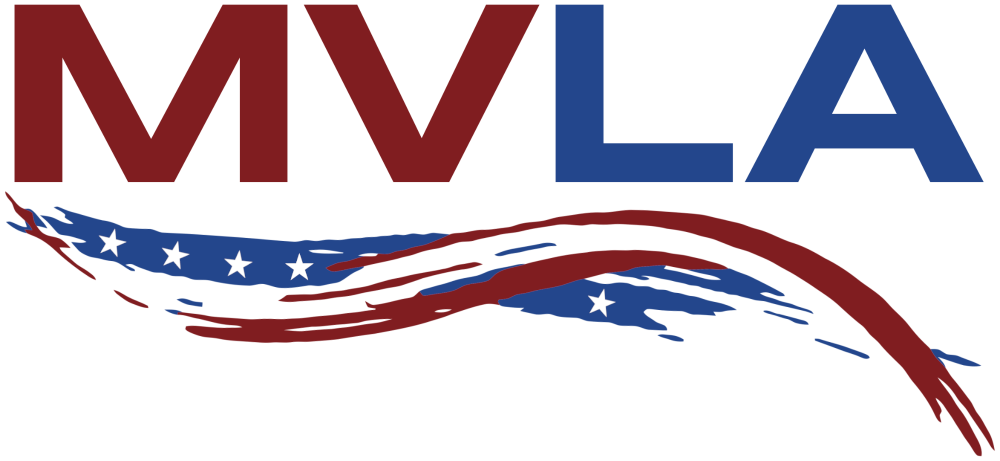
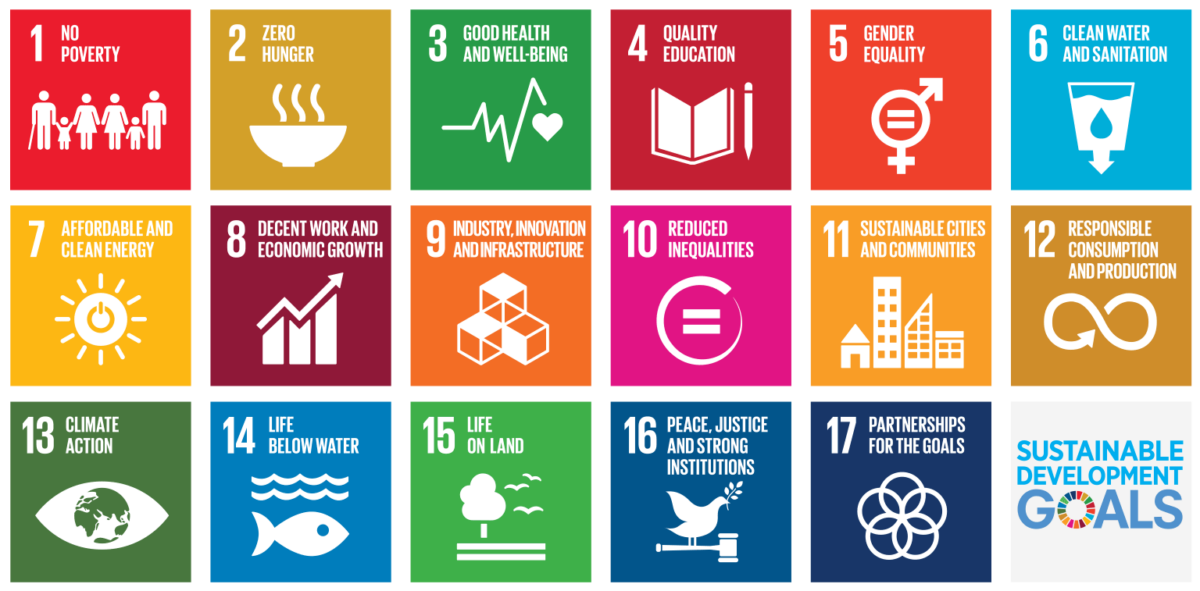


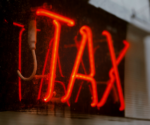
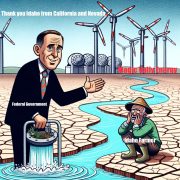
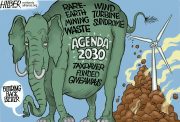
One reply on “Agenda 2030’s Sustainable Development Goals”
[…] deeper: Click here to read MVLA’s recent articles on Agenda 2030, and click here to read about Agenda 2030’s Sustainable Development […]